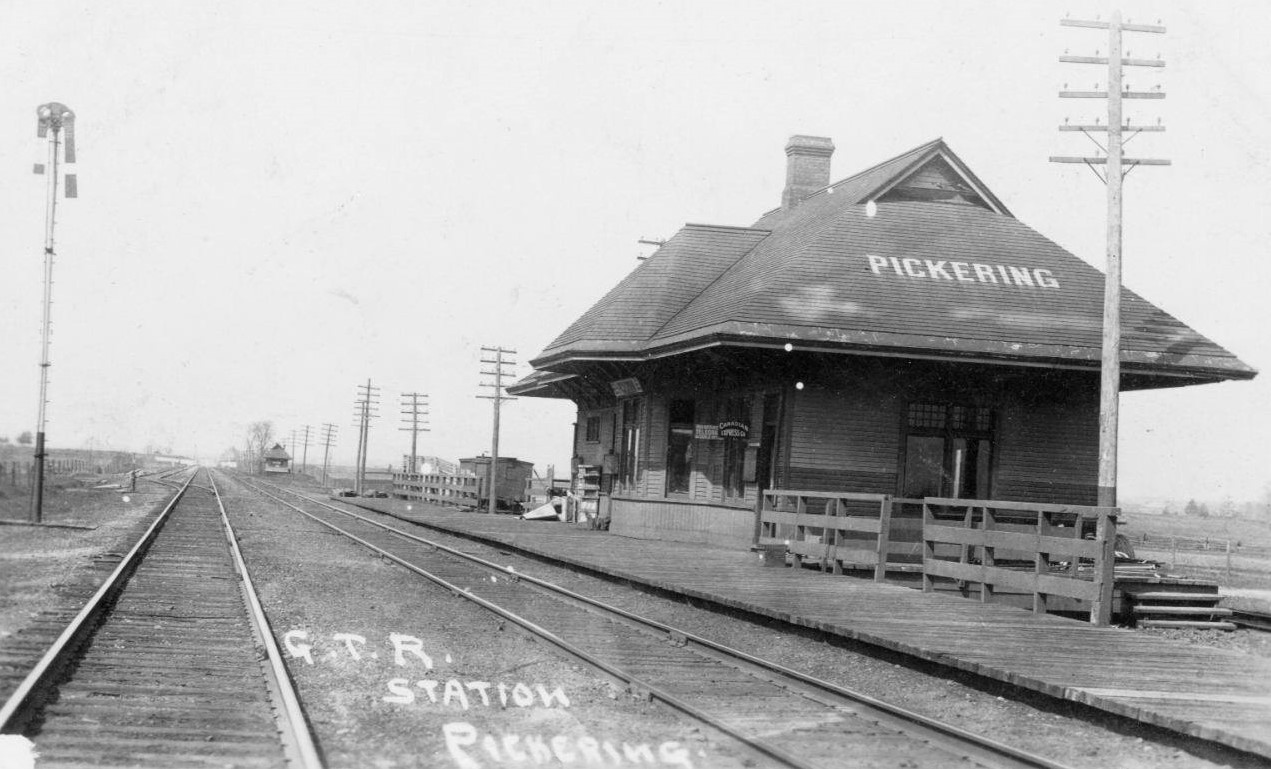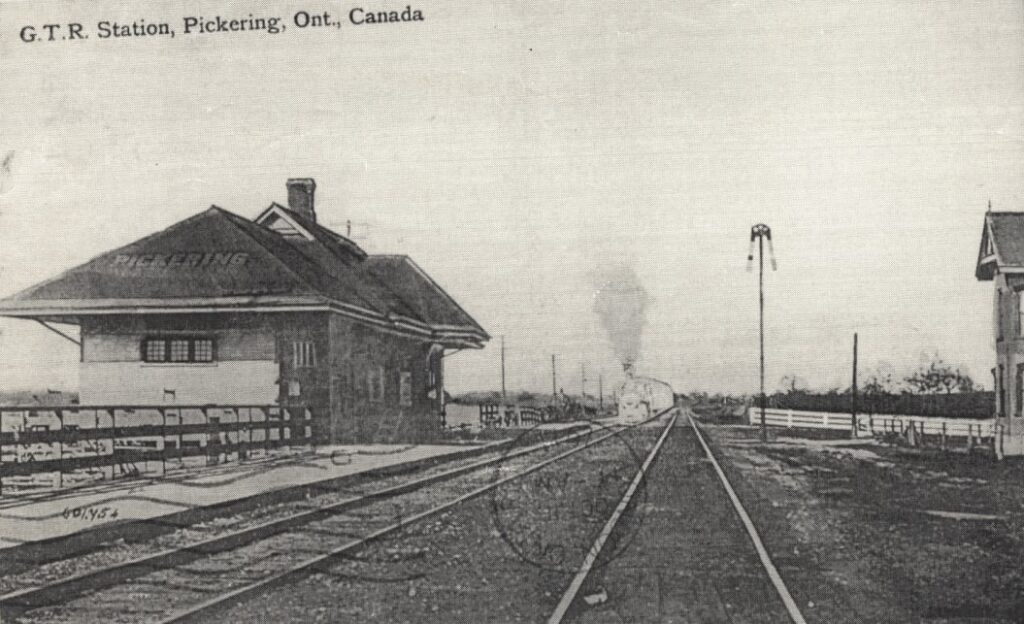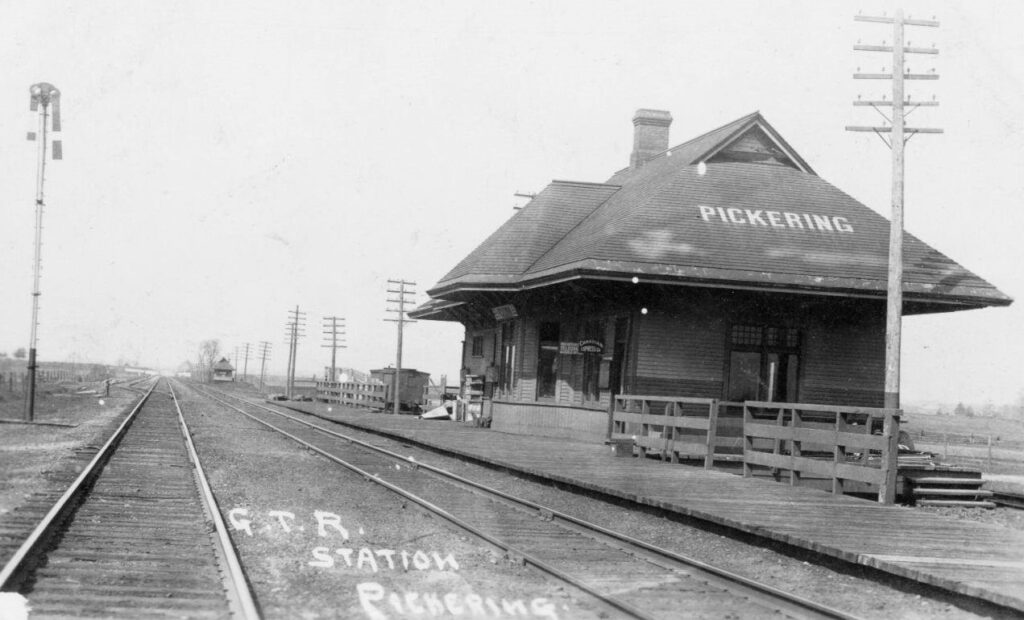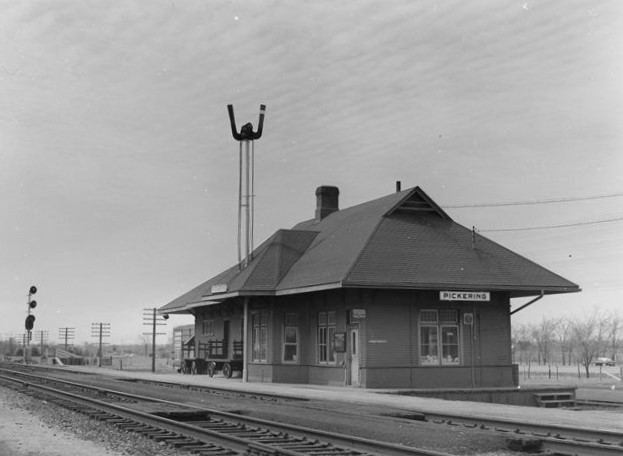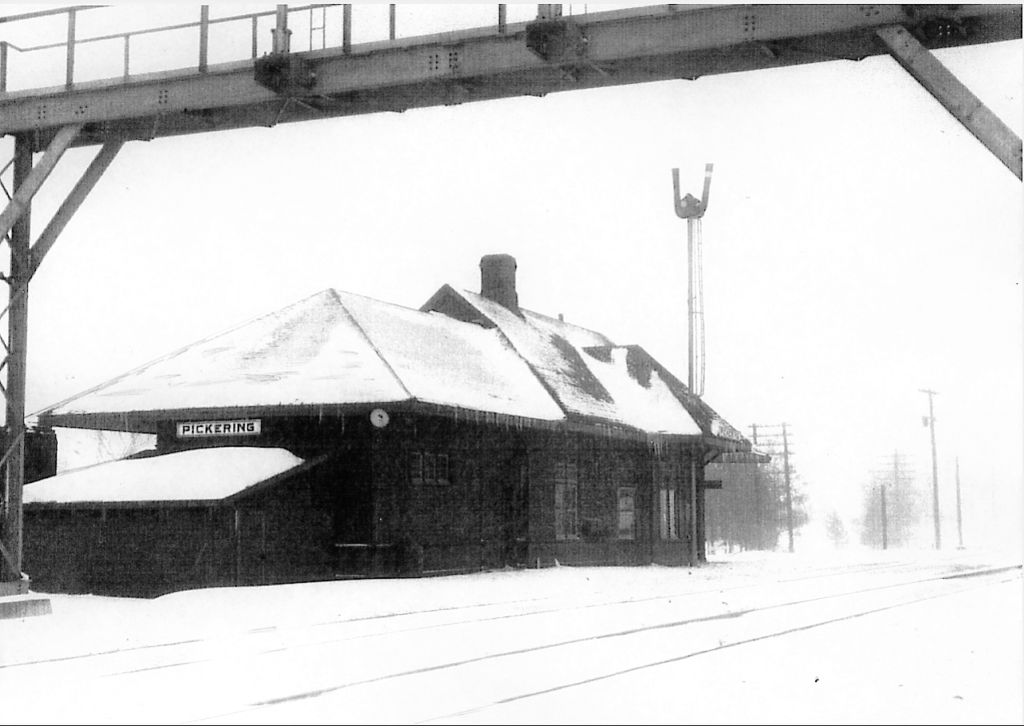Summary
The area of Pickering Township was settled in the late 1700’s and early 1800’s, growing to a population of 3,450 people by 1845. When the Grand Trunk Railway was under construction through the southern end of Pickering Township in 1856, it built passenger stations in two neighbouring villages. One was called Duffin’s Creek and it was primarily centered around the intersection of Kingston Road and Church Street (now called Pickering Village). The smaller of the two villages was called Dunbarton and it was located at the intersection of Kingston and Fairport Road. The Duffin’s Creek passenger station was built two miles further east at what is now Squires Beach Road, about a kilometre south of its namesake village. The station in Dunbarton, which was named Frenchman’s Bay, was positioned next to Liverpool Road and Bayly Street and even further away from the nearest settlement. No photographs are known to exist of either of these stations, though they were most likely rectangular structures with grey limestone exterior walls and a pitched roof with up to four chimneys. This was the standard design the Grand Trunk used for nearly all of its stations built between Toronto and Montreal, surviving examples of which can be found in Port Hope, Napanee and Ernestown. The first train arrived at both stations in Pickering Township on August 11th, 1856, though regular service between Toronto and Montreal did not commence until October 27th of that year. By the time of Canada’s confederation in 1867, Duffin’s Creek station was seeing four trains per day while only two were due to stop at Frenchman’s Bay.
The Frenchman’s Bay station did not last very long and it disappeared from Grand Trunk timetables by 1880, though a much smaller flag stop shelter called Dunbarton was built in the same location by 1893. Duffin’s Creek Station was renamed Pickering Station by the time the 1885 timetable was printed. In 1881, the Grand Trunk announced its intentions to double track its Toronto-Montreal line but these efforts did not reach Pickering until 1901. Part of the work involved flattening segments of the right-of-way with a significant uphill or downhill grade, and the right-of-way was considerably raised in the vicinity of the Dunbarton flag stop. The original Pickering/Duffin’s Creek Station was torn down and replaced at about the same time. The new station was only slightly larger than its predecessor, consisting primarily of wood and including some more architectural embellishments in the form of a roof and bay window. A house was also located across the tracks from the station, presumably built by the railway as living quarters for the station agent and their family. However, it’s unknown if this was built with the new station or if it existed alongside the previous one. Pickering remained a stop after the financially ailing Grand Trunk was nationalized and merged into Canadian National in 1923. A total of eleven passenger trains stopped at Pickering each day by 1940.
The popularization of automobiles and air travel during the postwar era contributed to a significant decline in rail passenger ridership across Canada during the postwar era. When Highway 2A (now Highway 401) was built through Pickering in 1947, it severed the road Pickering Station was situated on in two. The northern half was called Notion Road and the southern half became Squires Beach Road, the latter of which now providing the only access to the station. This, combined with the station’s inconvenient distance from Pickering Village, only further disincentivized local residents from taking the train. The final nail in the coffin was Canadian National’s construction of a bypass for freight traffic during the 1960’s to allow trains to reach the new MacMillan Yard in Vaughan. This bypass connected to the former Grand Trunk line at Pickering, and this included a third track which was laid along its north side for 2.4 kilometres from Liverpool Road to a point just west of Pickering Station. In 1967, the station and all adjacent railway buildings were demolished to allow the extension of this third track by a distance of roughly 350 metres further east.
The same year that Canadian National’s Pickering Station was torn down, provincial transit agency GO Transit opened their own Pickering Station 2.2 kilometres to the west. It remained the eastern terminus of GO service until the Lakeshore East line was extended to Oshawa in 1990.
Condensed Station Info:
| Location: | Served By: | Current State: | Date Built: | Date Demolished: |
| Squires Beach Road | Grand Trunk (1856 – 1923) Canadian National (1923 – 1967) | Demolished | 1856 (First) 1901 (Second) | 1901 (First) 1967 (Second) |


